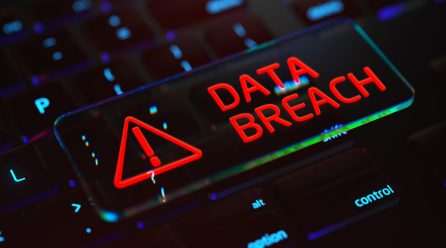Modern businesses must navigate a web of laws, regulations, and industry standards that dictate how they operate. Compliance requirements span multiple areas, including data privacy, anti-bribery, trade compliance, financial regulations, health & safety, the environment, and other industry-specific mandates – and they can vary by industry and country.
Failing to comply with these requirements can lead to hefty fines, reputational damage, legal action, or even the loss of the organisations operating licence. A robust obligations register is essential for firms to fully understand all applicable regulations, laws, and standards and their requirements. Having a comprehensive ‘obligations register’ ensures that organisations can systematically track, manage, and demonstrate compliance with all applicable obligations. By capturing the specific requirements of each regulation, and linking them to internal policies, procedures, and controls, an ‘obligations register’ provides a single source of truth for all compliance requirements.
In this blog, we explain how firms can use GRC software to digitise their ‘obligations register’ and automate compliance monitoring on an ongoing basis. We provide tips on how to manage compliance obligations across multiple jurisdictions and countries, and we detail how software can automate the regulatory change process and facilitate ongoing compliance checks and monitoring.
The Challenges of Manual Compliance Tracking
Many organisations still rely on spreadsheet-based processes to track and manage their compliance obligations. While spreadsheets may seem like a simple solution, they present significant challenges, including:
- Lack of real-time visibility: Static spreadsheets do not provide a live view of compliance status, making it difficult to monitor obligations effectively.
- Data silos and inconsistencies: When multiple departments maintain their own records and use different spreadsheets, it creates inconsistent data – leading to potential gaps in compliance.
- Human error: Manual data entry with no data governance rules increases the likelihood of errors, which can result in compliance failures.
- Lack of accountability: Spreadsheets don’t offer user tracking – making it hard to know who changed what and when. This results in a lack of ownership and accountability.
- Difficulty managing regulatory change: Regulations and industry standards frequently change, and without an integrated change management process that links requirements back to the related policies and procedures, it can be hard to understand what needs to be updated to reflect the change.
- Limited audit trails: Spreadsheets do not provide an auditable history of changes and compliance actions, making it difficult to demonstrate due diligence to regulators.
- Manual reporting: Reports to understand compliance status, outstanding compliance actions, and areas of noncompliance must be created manually – which is time consuming and admin heavy.
Given these limitations, organisations need a more robust, automated solution like GRC software to maintain an effective ‘obligations register’ that fully integrates compliance actions into everyday business operations.
Advantages of Using Compliance Software to Automate the Process
Governance, Risk, and Compliance (GRC) software provides a powerful alternative to spreadsheet-based compliance tracking. By using the compliance capabilities offered by GRC software to build their obligations register, organisations can:
- Access out-of-the-box compliance frameworks for widely adopted regulations and standards like GDPR, HIPPA, SOX, NIS2, PCI DSS, CPS 230 and various ISO standards to preload all the requirements for these regulatory obligations and standards into their obligations register in the system.
- Centralise all compliance obligations and their individual requirements and jurisdictions in one system, ensuring full visibility and accessibility.
- Automatically track regulatory changes with regulatory horizon scanning, to keep processes and policies up to date with changing requirements – with minimal manual intervention.
- Assign ownership and responsibilities for each obligation to ensure accountability and utilise ‘user tracking’ to see who changed what and when.
- Automate task and action management, each employee has their own dashboard to easily complete compliance related tasks and checks online. Workflows can also be used for escalations and approvals.
- Link obligations to controls, policies, compliance checks, and risk assessments, creating a cohesive, integrated compliance framework.
- Generate real-time reports and dashboards, providing leadership with an up-to-date view of compliance status.
- Streamline audits and regulatory reporting by maintaining a comprehensive, tamper-proof record of compliance activities.
How to Build an Obligations Register and Automate Compliance in GRC Software
In this section we’ll explain how GRC software can digitise an organisations obligations register and automate compliance processes.
Identifying and Documenting Obligations
GRC software enables organisations to build a comprehensive ‘obligations register’ – capturing all applicable laws, regulations, standards, and contractual requirements and their requirements in a structured format. Each obligation is documented with details such as:
- The specific requirements outlined in the regulation
- The jurisdiction(s) where the regulation applies
- The compliance actions and steps taken to meet the requirement
- The functions and business areas that are impacted
- The responsible stakeholders and owners for each requirement within the organisation
- Any controls that are put in place to minimise the risk of noncompliance
Many GRC tools offer out-of-the-box compliance frameworks for widely adopted regulations and standards like GDPR, HIPPA, SOX, NIS2, PCI DSS, CPS 230 and various ISO standards. This enables organisations to preload all the requirements for these regulatory obligations and standards into their obligations register in the system without creating it all from scratch manually – saving valuable time and ensuring all requirements are captured.
Linking Obligations to Controls and Policies
One of the biggest advantages of using a GRC platform for compliance is the ability to map obligations to internal controls, policies, and procedures. Compliance is all about proving what the organisation is doing to meet the requirements outlined in each applicable regulation or standard. This might involve implementing a specific step-by-step process or a regular compliance check, it might be by establishing a new policy or staff training, it could involve implementing a specific control or a safety or security measure. Each ‘compliance action’ must be clearly documented on the ‘obligations register’.
Of course, it’s not enough to just list out what ‘compliance actions’ the organisation has implemented to ensure compliance with the requirements. Firms must prove that these measures are effective through ongoing compliance monitoring.
For example:
- A data privacy obligation under GDPR can be linked to the relevant data retention policies and encryption controls.
- An anti-bribery requirement can be tied to employee training programs, third-party due diligence processes and the organisations gifts and hospitality procedure.
- A trade compliance mandate can be connected to export control procedures and supplier risk assessments.
This ensures that each compliance requirement is supported by clear internal mechanisms to meet regulatory expectations.
By mapping various regulatory requirements with the actions and processes the organisation has established to ensure compliance, organisations gain a holistic view of compliance status and can easily demonstrate how they meet regulatory requirements.
Monitoring Compliance with Attestations and Checks
Even with clear compliance actions and processes established, firms must also ensure these processes are effective in meeting the requirements outlined in the regulations and standards. For example, if policies are out of date or are not attested to, or if employees fail training or are not following processes, or controls are not effective, then the organisation is likely not compliant.
GRC software enables organisations to set up automated compliance checks and attestations, ensuring ongoing adherence to regulatory obligations. These include:
- Scheduled Compliance Attestations: This enables designated employees to confirm adherence to policies and controls online.
- Regular Control Checks: Some compliance controls will involve implementing a policy, rolling out employee training, or establishing a strict process. The GRC software enables teams to schedule regular checks to understand if the controls are effective and document the findings for ongoing monitoring.
- Compliance Checks: Many compliance requirements require organisations to follow a specific process – the system will send out regular notifications asking staff to check that the process is working and address any problems – with all issues and remediating actions fully documented in the system.
- Automated Control Monitoring: Compliance systems can pull other transactional and operational data into the system via API integrations to monitor compliance in large data sets based on predefined rules. Alerts and notifications are sent to flag compliance issues in the data enabling staff to investigate.
- Exception Reporting: This is used to flag potential compliance gaps for investigation.
- Real-time Dashboards: These allow compliance teams to monitor the status of all obligations.
These features reduce manual effort and provide an auditable trail of compliance efforts, making it easier to respond to regulatory inquiries.
There are many other ways that GRC software can help organisations to implement best practice processes, that provide proof of compliance. Some regulations require organisations to have best-practice processes for key areas like, risk management, incident reporting, internal controls, third-party risk, gifts & hospitality, conflicts-of-interest, whistleblowing & disclosures etc. GRC platforms provide a framework for companies to implement best-practice processes for all of those areas making it easy to prove compliance.
Achieving compliance requires comprehensive policies and procedure documents that ensure staff are following processes. Compliance software enables firms to establish an online policy library, automate policy updates, changes, and approvals, and collect employee attestations – automating policy management and providing adequate proof of compliance and regulatory change.
These platforms also offer best practice processes for regulatory change management. As regulatory obligations and requirements are loaded into the platform, they are mapped to the relevant, business processes, policies, and controls that have been implemented to ensure compliance. Therefore, when a policy changes, firms can quickly understand what processes, and policies will likely need to be amended to align with the change. Some tools offer regulatory horizon scanning, where firms can subscribe to their preferred regulatory content provider and receive notifications when the regulations change. From there automated workflows facilitate the implementation of the change–fully documenting who amended the change and when.
Managing Cross-Jurisdictional Requirements
Many regulatory requirements apply across multiple jurisdictions but may have slight variations depending on the country. GRC software allows organisations to map overlapping obligations to a single policy or control, avoiding duplication while ensuring compliance with regional nuances.
For example:
- GDPR (Europe), CPS 234 (Australia), and CCPA (California) all require data protection measures but have different specifics. A single privacy policy can be mapped to both frameworks, with adjustments made for jurisdiction-specific clauses.
- Anti-bribery regulations in the US (FCPA), Criminal Code Act 1995 (Australia) and the UK (Bribery Act) share similarities but have distinct compliance expectations. A centralised due diligence process can be adapted to meet all requirements.
This capability helps multinational organisations maintain consistency while tailoring compliance efforts to different regulatory environments.
The Benefits of an Automated Compliance Approach Using GRC Software
By leveraging GRC software to maintain an ‘obligations register’ and monitor compliance, organisations gain several key benefits:
- Increased efficiency: Automation reduces manual workload, freeing up compliance teams to focus on addressing areas of non-compliance.
- Improved accuracy: Data governance rules like menus, drop downs and auto formatting minimise data entry errors and ensure compliance obligations are accurately documented and monitored.
- Greater accountability: Assigned responsibilities, user tracking, and automated workflows ensure that compliance tasks are completed on time – ensuring complete ownership of compliance obligations.
- Better risk mitigation: A structured approach to compliance reduces the risk of fines, penalties, and reputational damage.
- Enhanced reporting: Real-time analytics and dashboards provide clear insights into compliance status, aiding decision-making and regulatory reporting.
Conclusion
A well-maintained ‘obligations register’ is the cornerstone of effective compliance management. While manual tracking methods create inefficiencies and risks, GRC software automates the process, ensuring that organisations can track, manage, and demonstrate compliance effortlessly.
By integrating obligations with controls, policies, and compliance attestations, organisations can build a resilient compliance framework that not only meets regulatory requirements but also mitigates compliance risk.
For organisations looking to enhance their compliance processes, adopting a GRC-platform with compliance management capabilities to digitise their ‘obligations register’ and automate compliance processes a critical step toward greater efficiency, reduced risk, and improved regulatory adherence.





